Case Presentation: Managing Menopausal Symptoms in Emma Peterson
VerifiedAdded on 2023/06/08
|13
|1346
|130
Presentation
AI Summary
This presentation analyzes a case study of a 50-year-old postmenopausal woman, Emma Peterson, who presents with hot flashes, insomnia, and vaginal dryness. The presentation includes a medical synopsis of the patient, detailing her history, vital signs, and lab results, including elevated FSH levels. It addresses the problems encountered in menopause, such as hot flashes, bone loss, and psychological symptoms. The presentation outlines the goals of therapy, which include symptom relief, osteoporosis prevention, and improved quality of life. It discusses both non-drug and hormonal therapies, including their benefits and risks. The presentation also covers non-hormonal alternatives like phytoestrogens and selective estrogen receptor modulators. A therapeutic plan is proposed, along with monitoring strategies and patient education to enhance adherence. Finally, the presentation emphasizes the recommended duration of therapy and the importance of balancing risks and benefits, referencing the Women's Health Initiative study. The presentation also includes references to support the information presented.
1 out of 13
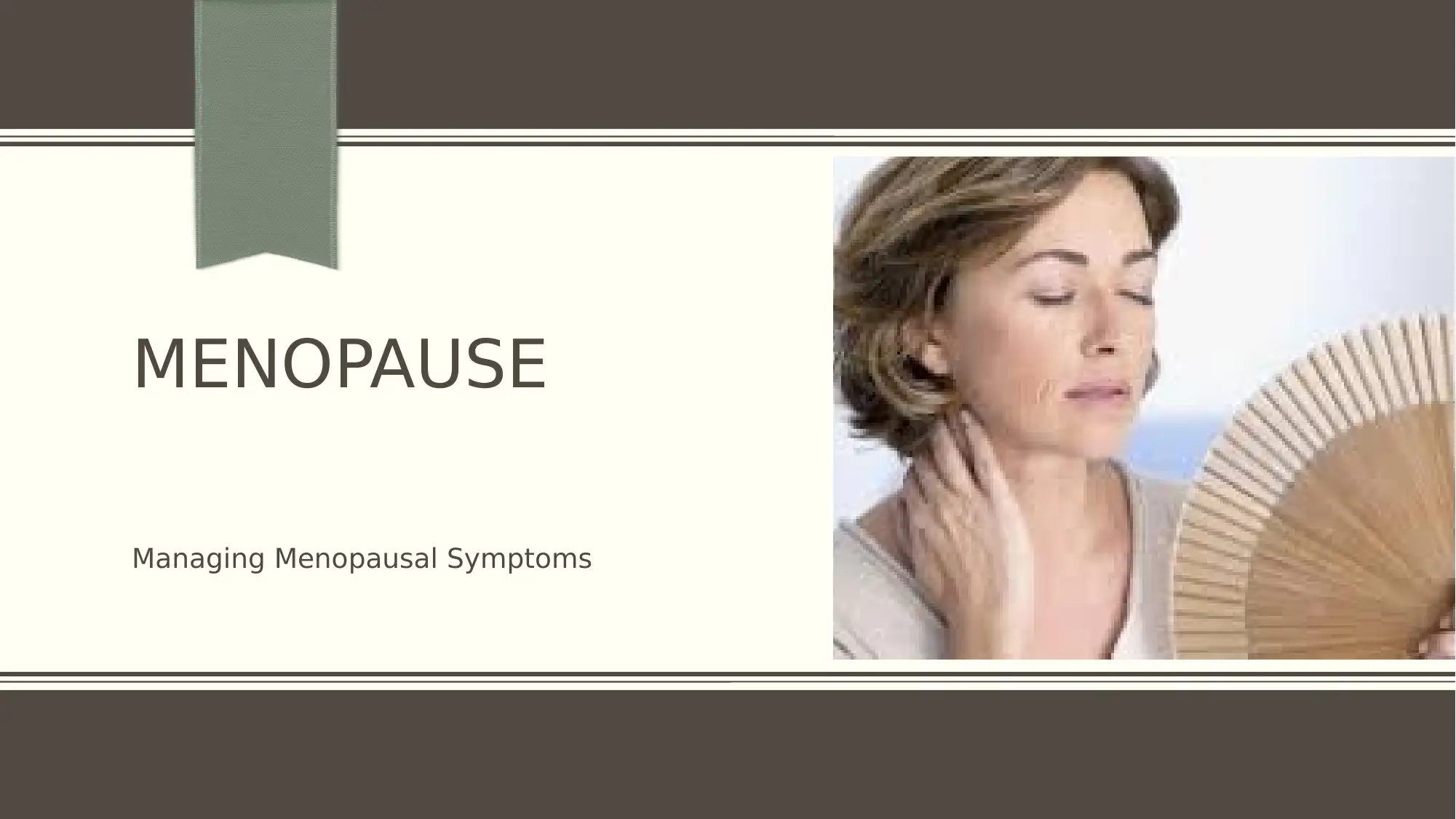
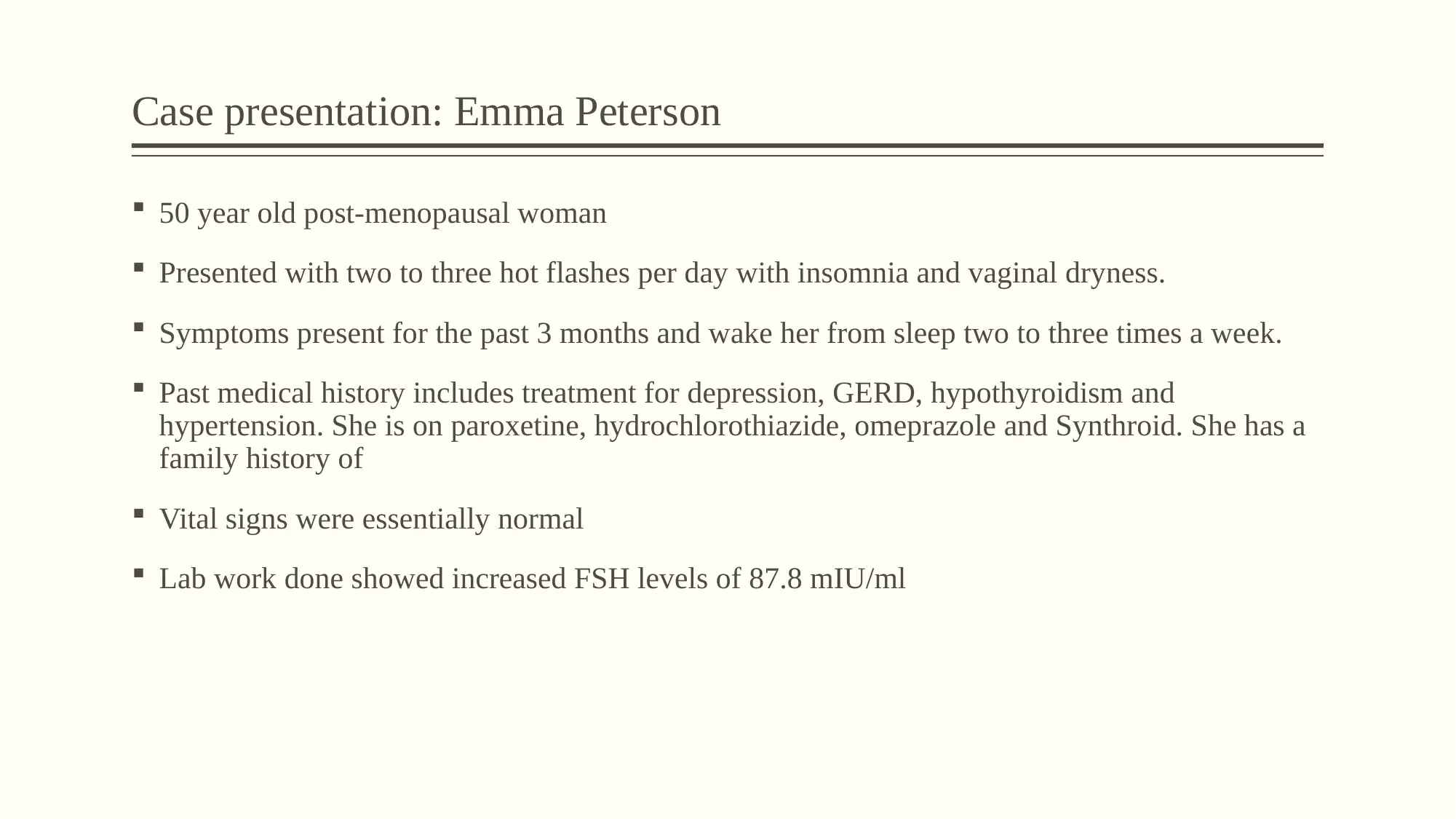
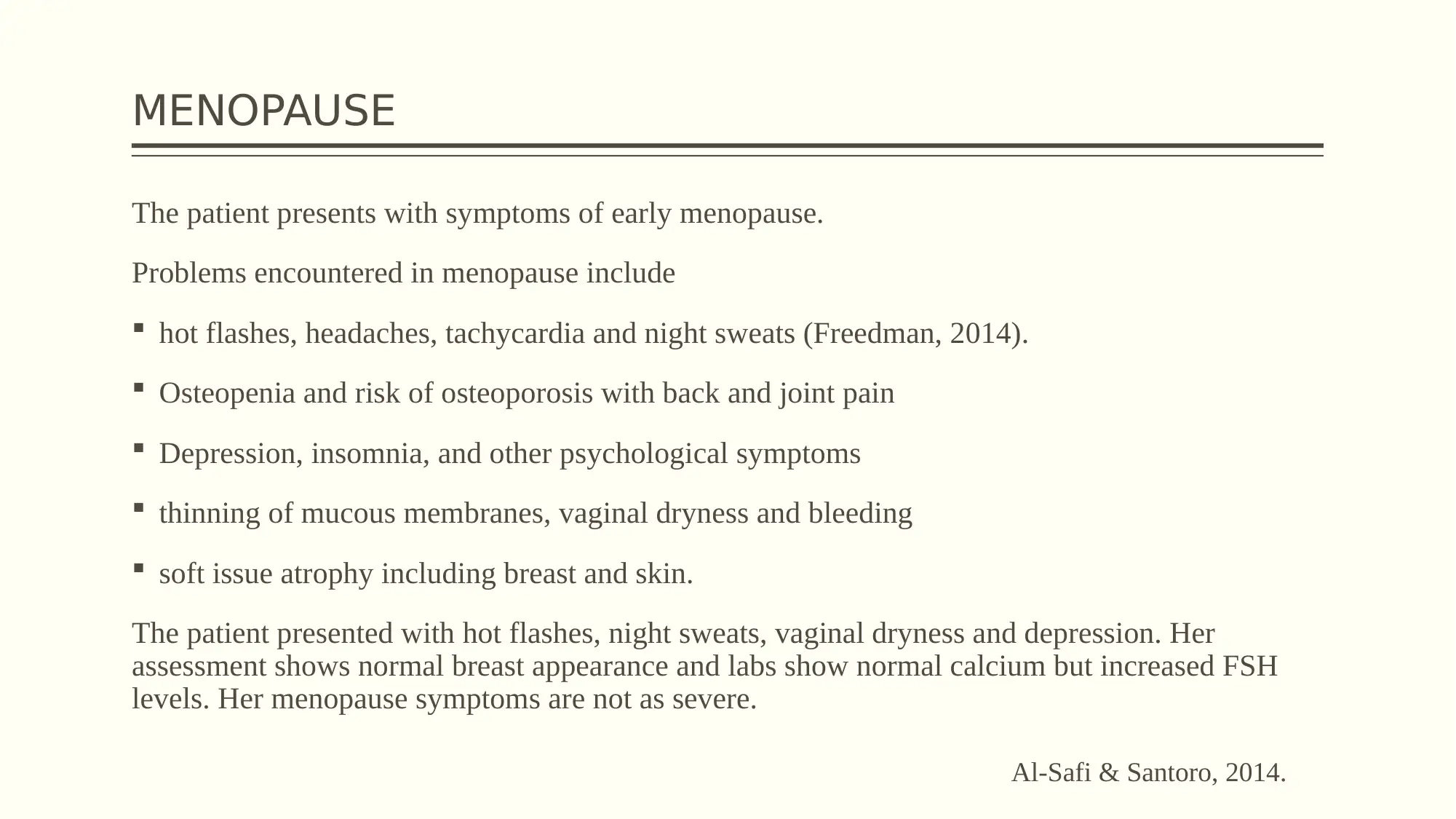


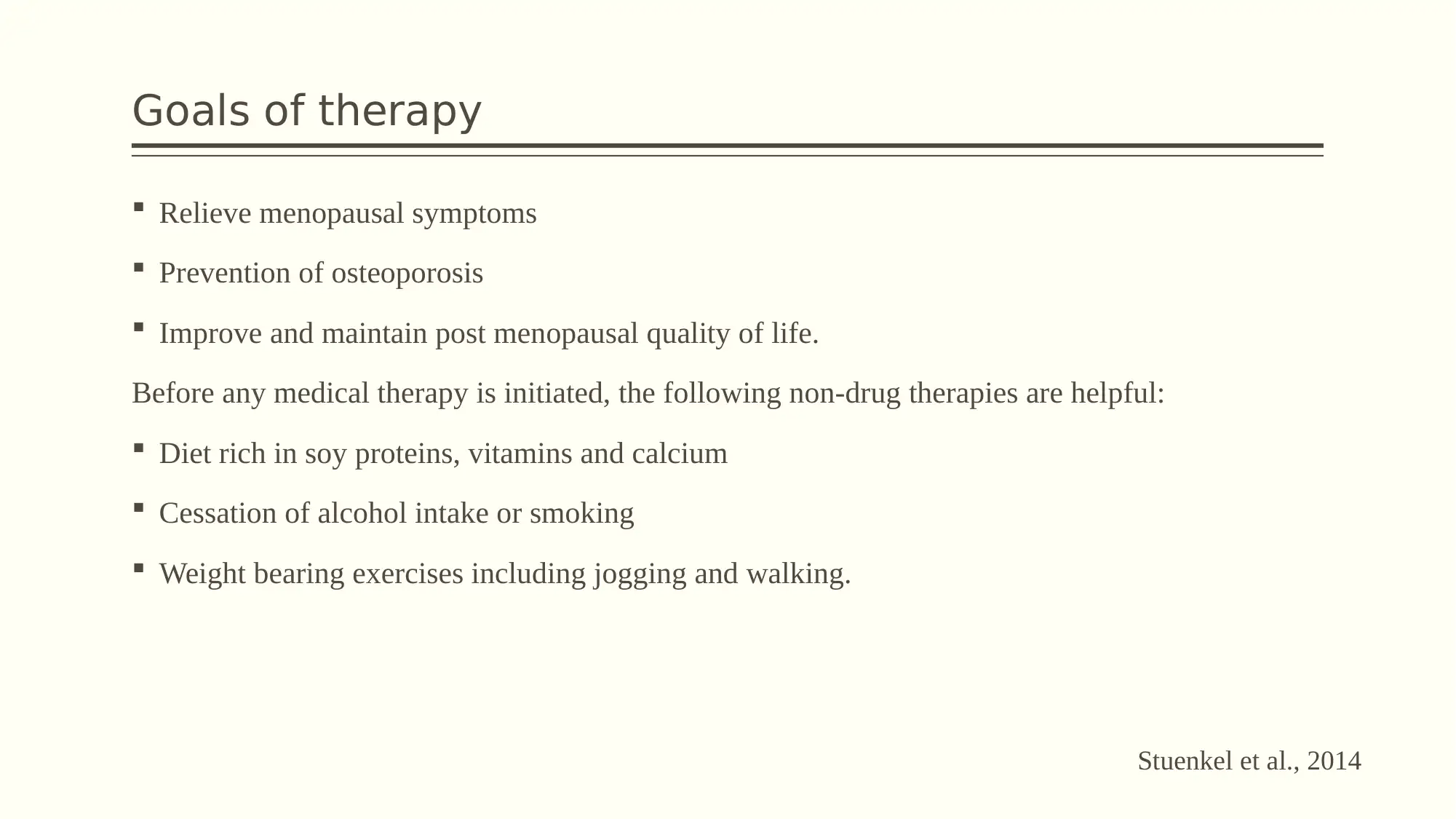
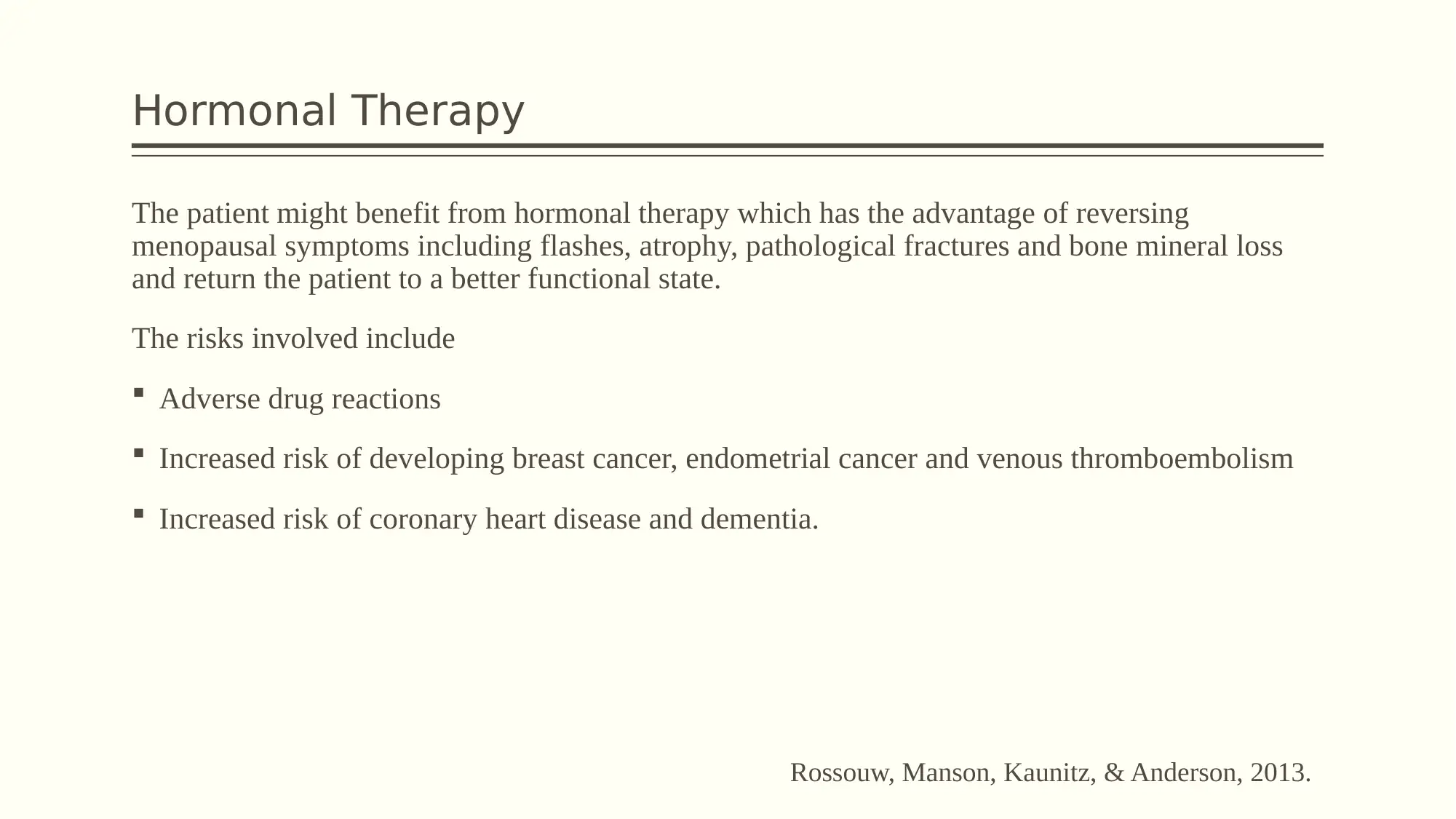
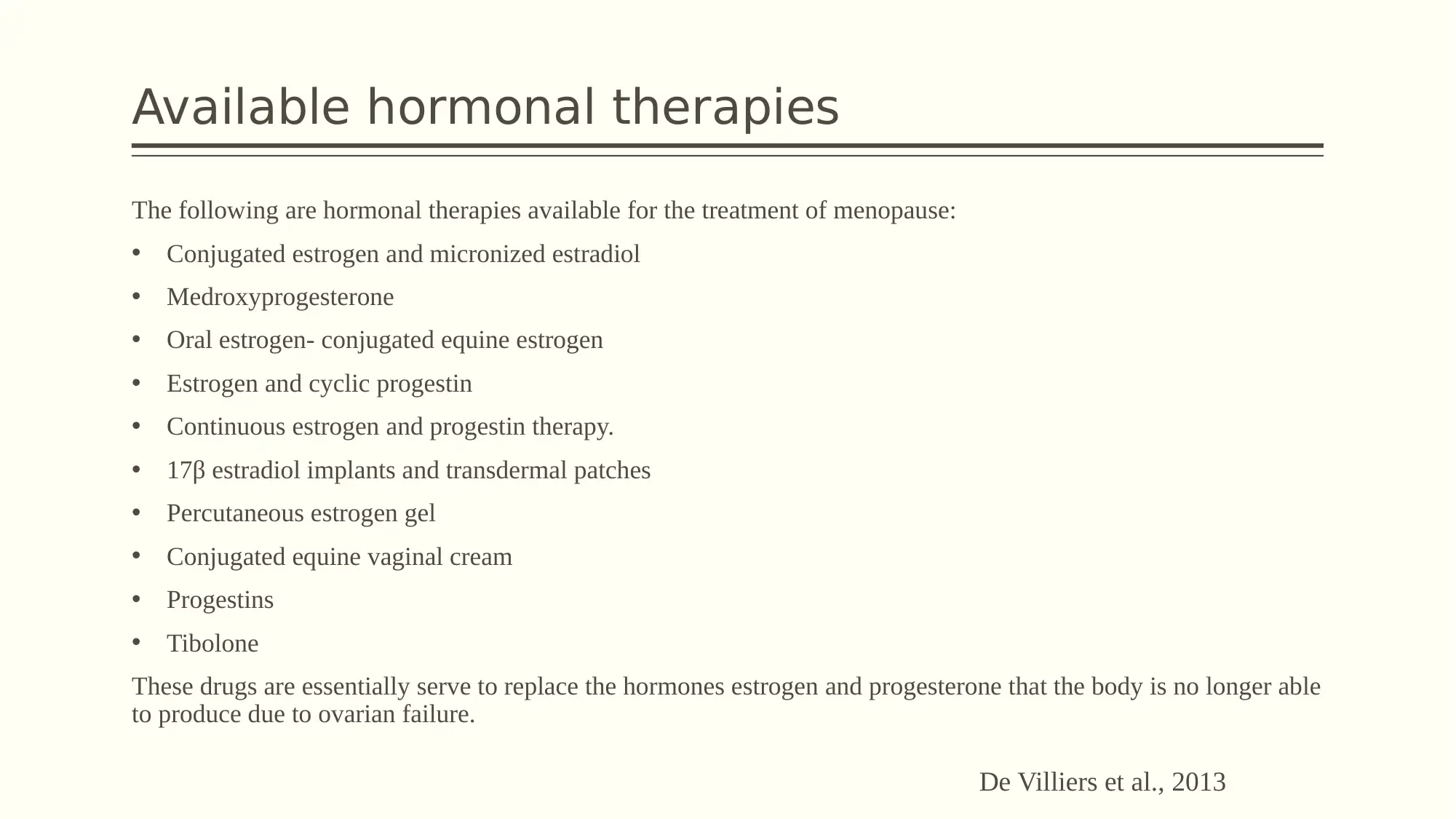
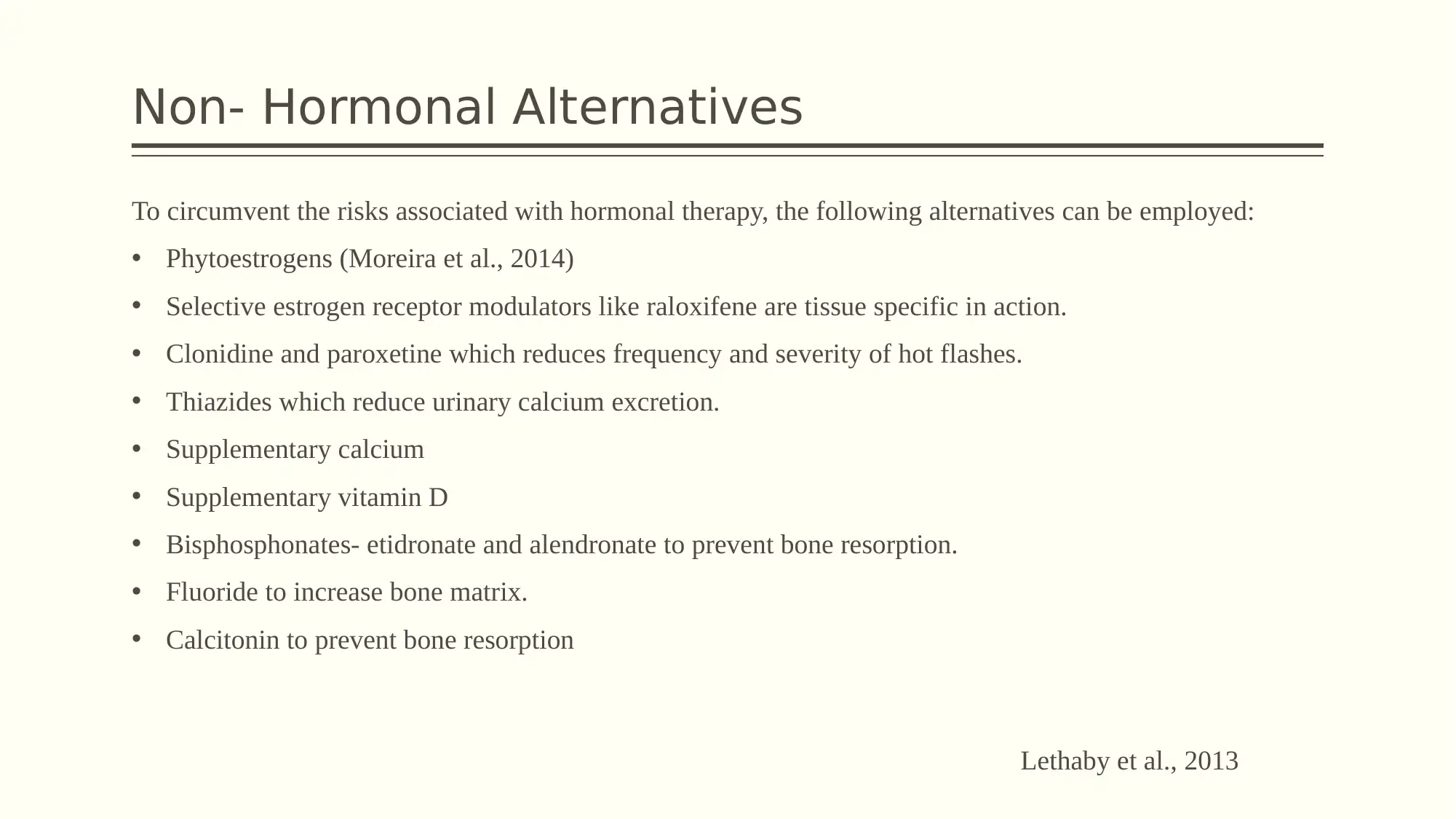

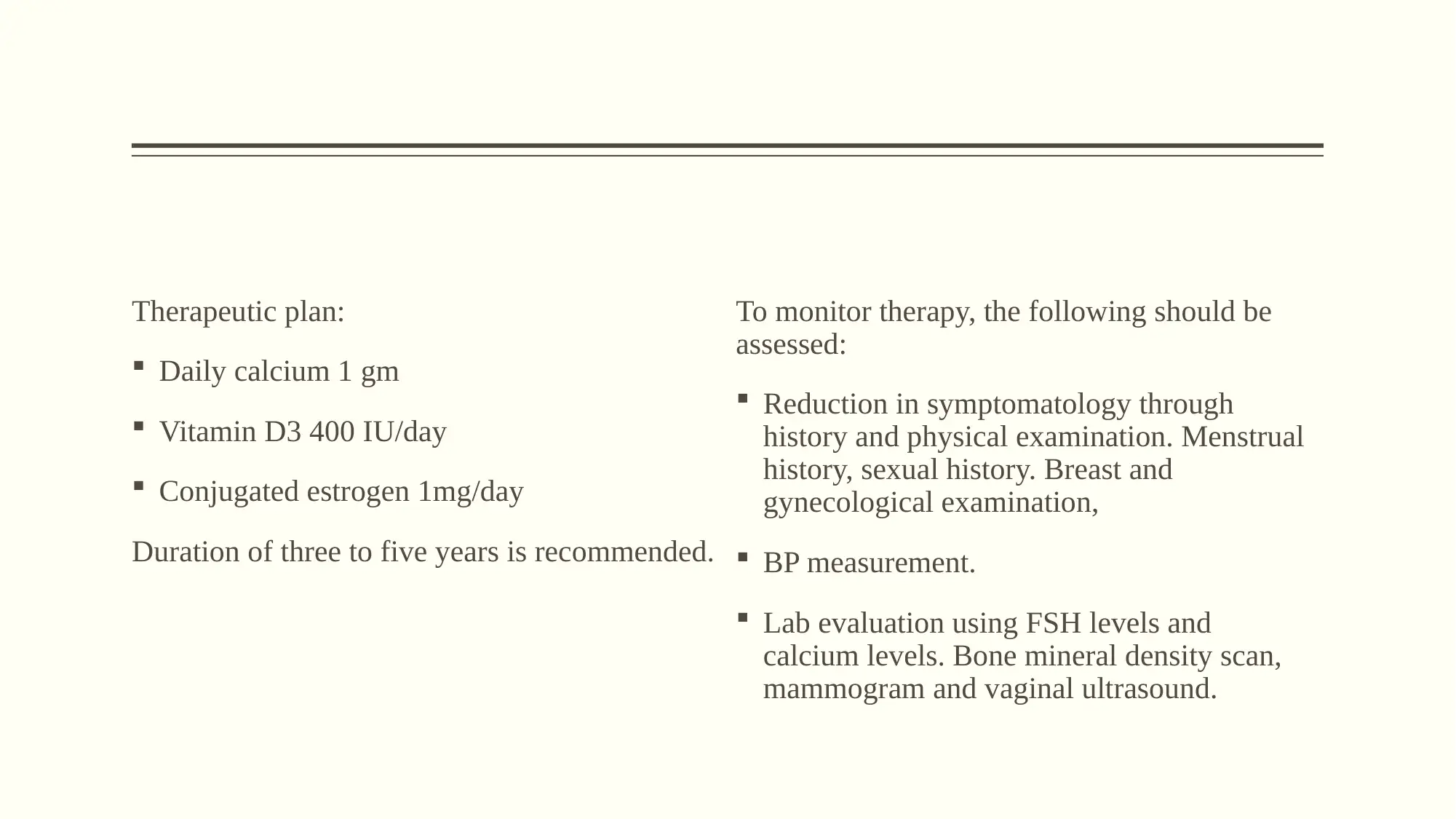
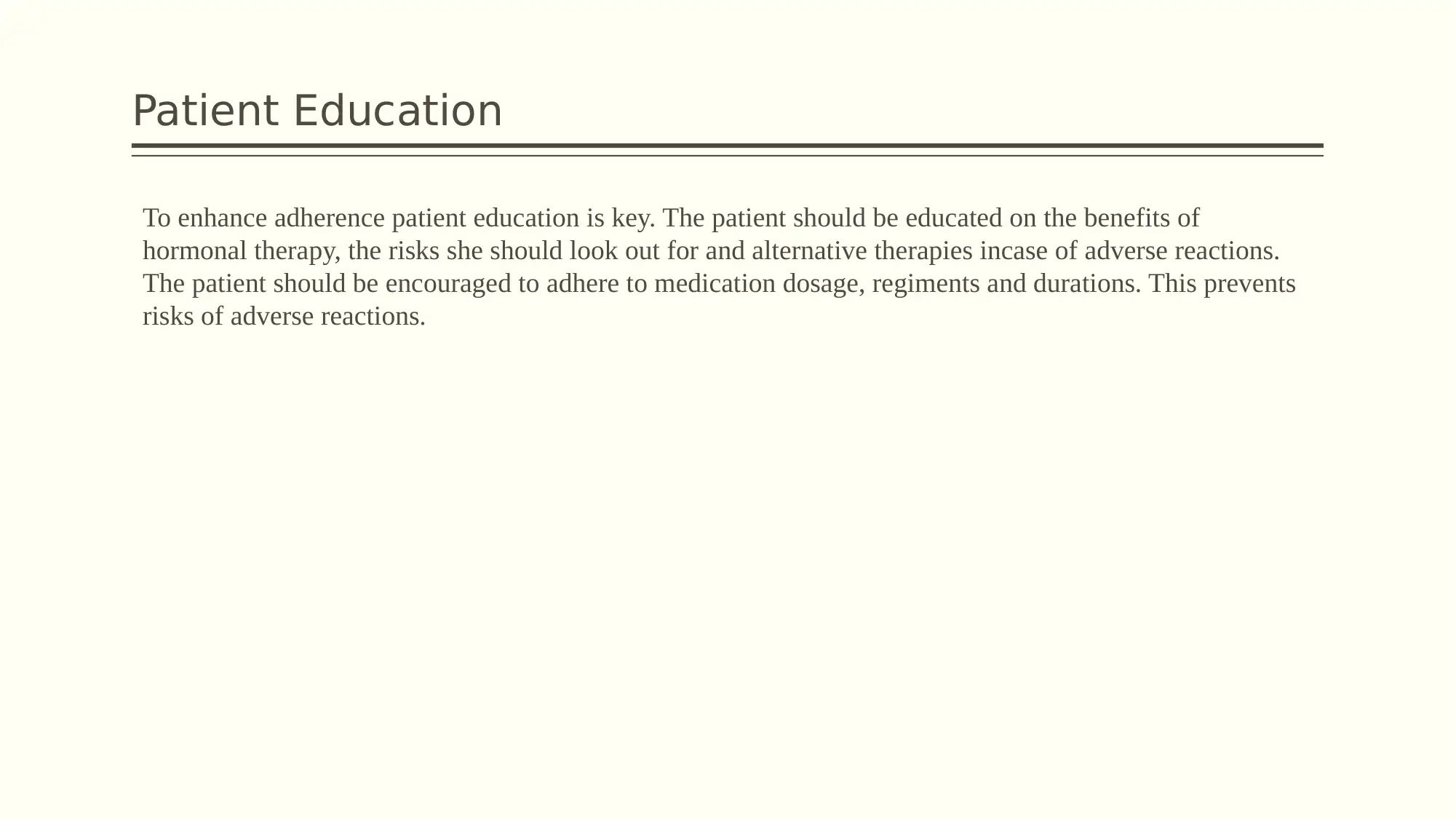
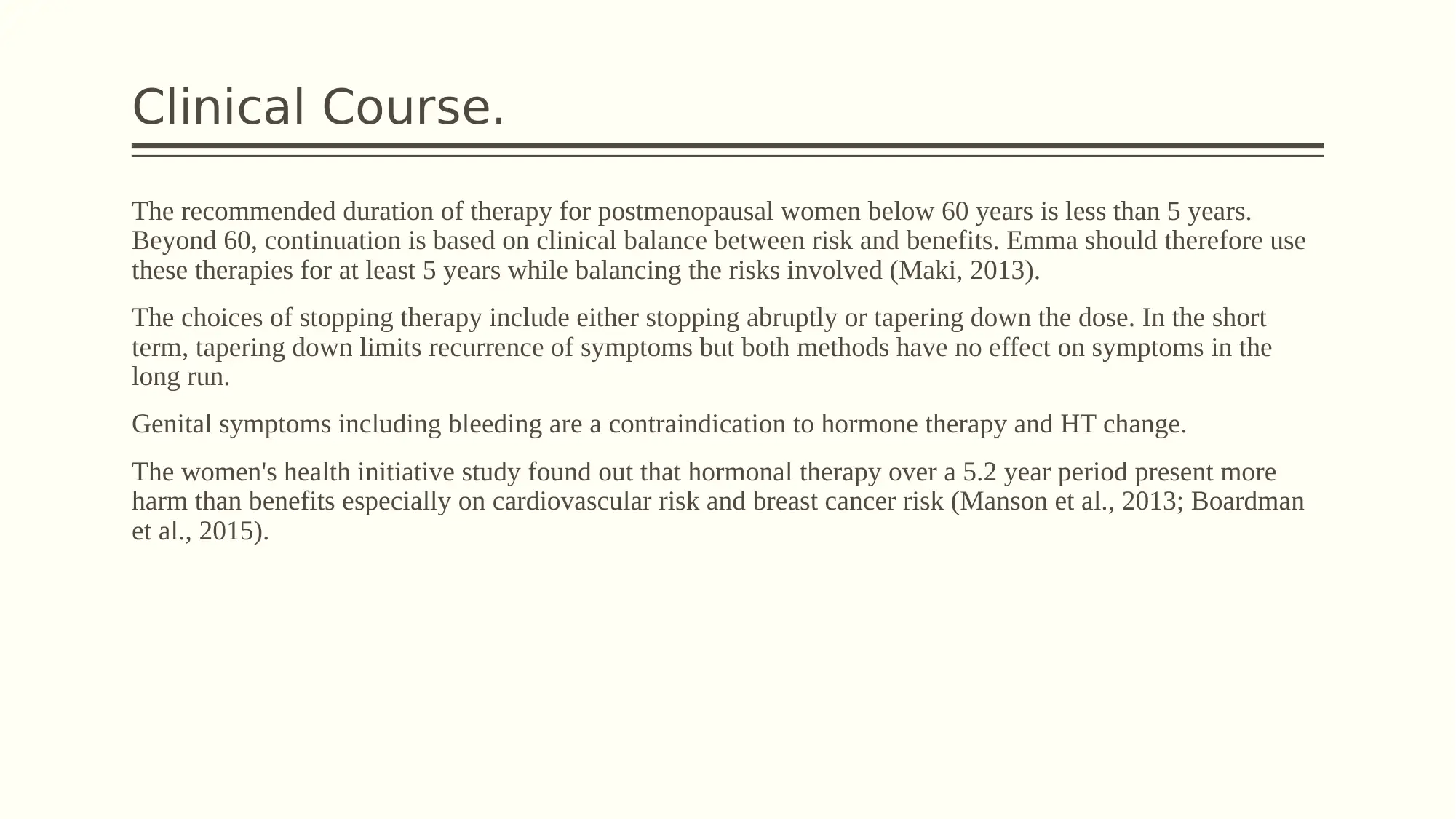


![[object Object]](/_next/static/media/star-bottom.7253800d.svg)